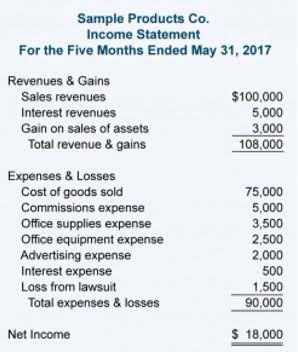
Contra accounts are used to ensure that financial statements accurately reflect the true value of an organization’s assets, liabilities, and equity. The general ledger is the record of all the financial transactions of a company. It is used to prepare financial statements and is the backbone of the accounting system. The accuracy of the general ledger is crucial to the reliability of financial statements.

Service Revenue Earned and Collected
- A current asset representing the cost of supplies on hand at a point in time.
- In accounting, liability accounts are used to record debts or obligations that a company owes to others.
- Contra accounts are important because they help to ensure that financial statements accurately reflect the true financial position of an organization.
- For example, Accumulated Depreciation is a contra asset account, because its credit balance is contra to the debit balance for an asset account.
- The following T-account examples provide an outline of the most common T-accounts.
By keeping this equation Law Firm Accounts Receivable Management in mind, companies can ensure that their financial records are accurate and up-to-date, which is essential for making informed business decisions. Debit notes are used to record transactions that increase the balance of an account. When a business purchases goods or services on credit, a debit note is issued to record the transaction. The debit note shows the amount owed to the supplier and the terms of the payment. It also serves as a proof of the transaction for both the buyer and the seller.

Understanding Debits and Credits in T Accounts
- Put your dividends, expenses and assets on the left of the T account to increase them.
- If the revenues come from a secondary activity, they are considered to be nonoperating revenues.
- Businesses often require customized reports tailored to specific stakeholder needs, regulatory requirements, or industry standards.
- In other words, an account with a credit balance will have a total on the bottom of the right side of the account.
Debits make sense here because they represent spending money, which decreases your available value. On the other hand, credits would reduce expenses (not very common) – this could happen if you return supplies to a vendor and get a credit (reducing the expense). This is the owner’s claim on the business – basically, what’s left after you subtract liabilities from assets. This happens when you pay dividends to yourself (debiting cash) which takes money out of the business and reduces your ownership stake.

5 T-accounts, debits and credits
- This process involves transferring the balances of revenue and expense accounts to the equity accounts to prepare for the next accounting period.
- The balance of revenue and expense accounts is important because it determines whether a company is making a profit or a loss.
- These entries are recorded as journal entries in the company’s books.
- In double-entry bookkeeping, a widespread accounting method, all financial transactions are considered to affect at least two of a company’s accounts.
Supplies that are on hand (unused) at the balance sheet date are reported in the current asset account Supplies or Supplies on Hand. Fees earned from providing services and the amounts of merchandise sold. Under the accrual basis of accounting, revenues are recorded at the time of delivering the service or the merchandise, even if cash is not received at the time of delivery.
What are T Accounts?
If the revenues come from a secondary activity, they are considered to be nonoperating revenues. For example, interest earned by a manufacturer on its investments is a nonoperating revenue. Interest earned by a bank is considered to be part of operating revenues. As a result of collecting $1,000 from one of its customers, Debris Disposal’s Cash balance increases and its Accounts Receivable balance decreases. Now these ledgers can be used to create an unadjusted trial balance in the next step of the accounting cycle.
How to Create Financial Pitch Deck Slides That Attract Investors
Each example of the T-account states the topic, the relevant reasons, and additional comments as needed. Debits and credits are terms used by bookkeepers and accountants when recording transactions in the accounting records. The amount in every transaction must be entered in one account as a debit (left side of the account) and in another account as a credit (right side of the account). This double-entry system provides accuracy in the accounting records and financial statements. Debit entries increase assets and decrease liabilities and equity, while credit entries increase liabilities and equity and decrease assets. In other words, debit and credit entries affect the balance sheet by changing the amounts of assets, liabilities, and equity.

And as you’re issuing sales invoices, making payments, receiving revenue, Deskera automatically debits and credits the transaction bookkeeping values into the corresponding ledger accounts. Conversely, credits show increases in liabilities and equity and decreases in assets and expenses. Remembering which goes where might take some practice, but don’t worry. Now, this T becomes your battleground for recording financial transactions.

Drag and drop transactions, visualize account balances dynamically, and even link them to your general ledger. This digital playground makes learning and practicing accounting principles more engaging and efficient. Loan officers and credit analysts use T-accounts to assess the financial health of potential borrowers. They analyze a business’s T-accounts for assets, liabilities, and equity. Every time you contribute money, you debit (increase) the account.
T Accounts vs. The General Ledger: What’s the Difference?
Whenever cash is received, the Cash t accounts account is debited (and another account is credited). Below is a short video that will help explain how T Accounts are used to keep track of revenues and expenses on the income statement. These entries are recorded as journal entries in the company’s books. When most people hear the term debits and credits, they think of debit cards and credit cards. In accounting, however, debits and credits refer to completely different things.